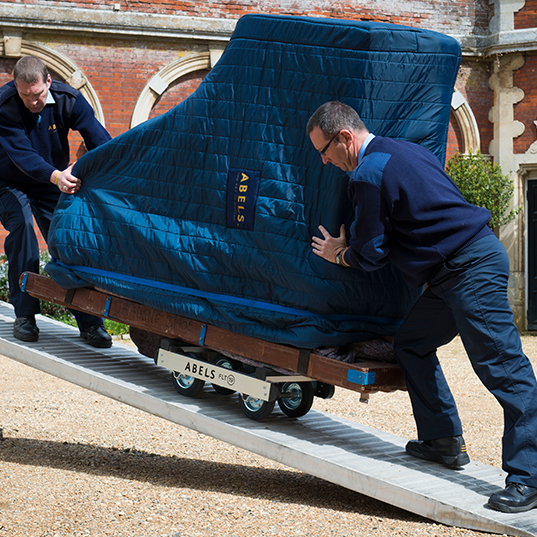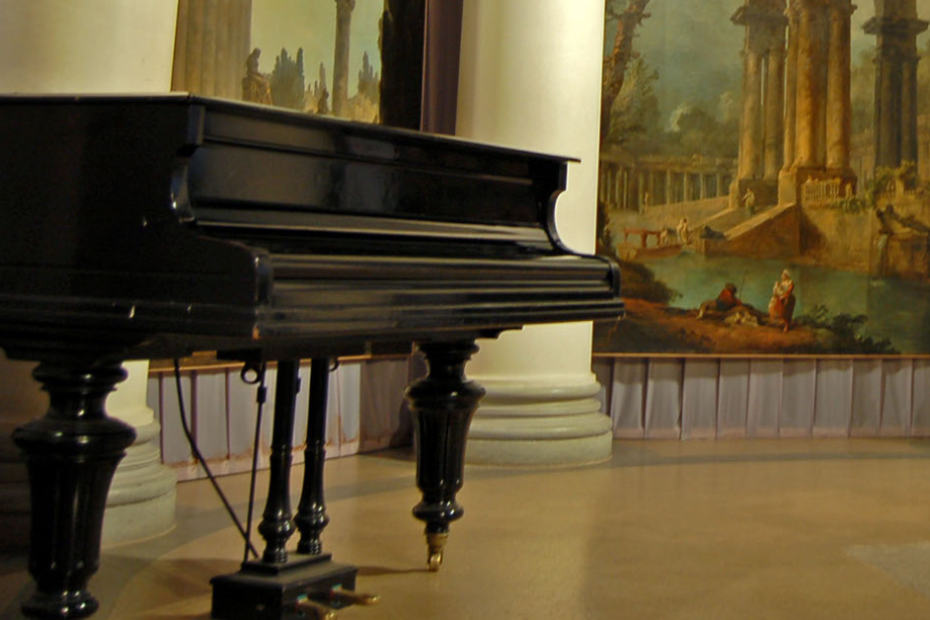Moving pianos is no easy task
Pianos are large, heavy and fragile: Three things that make moving anything difficult. When you add that pianos are often both financially and sentimentally valuable, it’s no wonder that they’re often one of the more challenging items that we have to handle during a home move, sometimes even across entire continents.
Luckily at Abels Moving Services, we pride ourselves on our expertise and considerable experience in moving pianos in London, the UK, across Europe and the rest of the world. No matter the size or value of your piano, our team can safely and efficiently move pianos safely to any destination national or international. As an experienced piano moving company, our piano moving experts have undergone rigorous training in preparing your instrument, packing or protecting the vulnerable parts, moving, unpacking and setting up, ready to be returned in the new home.
Transportation Of Pianos
Abels’ fleet of removal vehicles come complete with a range of features designed to help the moving of pianos, including soft air-ride suspension and a double inner skin to offer improved protection for loaded items. They’re all equipped with euro-5 compliant engines, which are currently the kindest to the environment. To increase security for moving pianos on long-distance trips, drivers sleep in the vehicle which is alarmed and has security seals on each door. Vans of various sizes are available depending on the job in hand. We can safely deliver your baby grand, boudoir grand, or stand up grand piano anywhere across Europe from the far south of Italy to Scandinavia, and from Gibraltar to Russia.

How We Safely Remove Pianos
As a professional piano moving company, we have a proven process for such fragile and heavy instruments. There are several steps involved in our expert piano removals to ensure that your piano is moved without damage and without stress. Take a look at how to move pianos with Abels below.
- Assessment
- Packing
- Removal
- Casing
- Personel
- Security
- Insurance
Assessment
Before moving a piano, we check for ease of access at the point of collection and delivery. This is part of our thorough approach to planning a client’s move and ensures the minimum of fuss for our customers. The key to our service is not only ensuring the piano itself is not damaged when moved, but also minimising the risk of damage to floorings, walls, fittings, and of injury to our moving teams.
Prior to every piano removal, a senior member from our moving team jointly inspects the instrument with the customer. Any existing damage is pointed out and noted on a piano condition report, which is jointly signed. Damage is also photographed for the customer’s peace of mind.
Packing Your Piano
Carefully, the crew remove or tie down everything that is appropriate for the model being handled. Piano parts that are vulnerable to damage, such as the music stand, pedal action and grand piano legs are removed and packaged, with keyboard lids also removed or locked down.
We utilise a protective “shoe”, which is a special platform placed under the piano to allow easier carrying and to shield the piano, where we can use piano wheels under the shoe to move it safely. If there is any risk of possible damage by the rubber wheels to flooring, we provide protective floor coverings.
The packaging used on the piano will depend upon the nature of the piano, the customer’s specific requirements and the destination. Materials range from soft thick woollen transit blankets wrapped and tied to secure, through to a full “export wrap” which involves either a 5-ply wax lined robust paper blanket or a soft cloth inner lined bubble wrap together with a card over layer for added protection.
The piano is secured using a high breaking strain furniture web for transportation in the Abels air ride vehicle.
Piano Casing
Many of the high-value pianos we move have a bespoke wooden case manufactured for them, offering added protection. The cases are lined inside with foam to cushion the instrument and are held in Abels’ store until the next time the piano is to be relocated. If we are shipping pianos internationally, crating is undertaken as a normal procedure for all grand piano removals.
Organising Piano Removal
Following export packing for your piano, our experts will organize all the necessary international documentation, booking, and coordination of the shipping container or airfreight transportation should there be an urgent requirement for moving your piano. Our extensive global network of agents will undertake the import customs clearance before arranging the delivery to your new home and setting up as required.
Expert Personnel
Due to the high value of many of our consignments, all Abels operatives have a high level of security clearance, carrying identification cards at all times. Our employees packing techniques are honed each year in the Abels training school, using our own pianos and not our clients’, to ensure that they are skilled in even the most difficult piano removals.
Security
All movements are confidential and handled only by senior operations managers. Client information remains private and it is the duty of all Abels’ employees to maintain confidentiality. Warehousing is purpose-built, modern, clean and dry. Security is provided by state-of-the-art Redcare alarm and CCTV systems, and warehouses are located in low-crime areas.
Piano Insurance
Values of pianos can vary greatly. Christies recently sold a Victorian Steinway for £750,000, and new pianos are still produced by Yamaha valued at over £200,000! Abels can discuss, and arrange insurance to cover the door to door movement of your piano to make sure you can rest assured that you are covered should the worst happen.
Further Piano Moving Advice
Piano Tuning
Regrettably, a piano needs time to get used to any new environment as it must adjust to the humidity conditions. It is often recommended to wait three weeks to allow the wooden parts to settle because they shrink and swell as the humidity changes. Ideally, pianos should be placed on an inside wall away from windows, doors and from drafts. Also avoid central heating points that can dry out the piano, but do not try to compensate this with a bowl of water. Remember that, unlike other musical instruments that you can store for years, the piano will need tuning even though not used for the period in store. The movement and humidity changes do compromise the tuning.
What are standard piano sizes?
A grand piano is measured from the front of the keyboard to the back of the lid.
- Concert Grand – 8′ 11″ and larger
- Half Concert Grand – 7’4″
- Parlour Grand 6’8″
- Drawing Room Grand – 6’4″
- Professional Grand – 6′
- Living Room Grand – 5’10”
- Baby Grand – 5’8″
- Upright – 51″ and up
- Vertical – 36″ – 51″
- Studio – 44″ or taller
- Console to 42″
- Spinet – 36″ to 38″
The largest piano known is a Challen Concert Grand. This piano is 11 feet long, with a total string tension of over 30 tons, and weighs more than a ton! Moving pianos is a precise operation and due to their weight, vulnerability and, of course, value, should only be undertaken by professionals.
Ivory keys on a piano
Many modern pianos (made since approximately the 1950s) will not have ivory keys due to world legislation banning their use. Today, we must obtain CITIES certification to ship a piano with ivory keys out of the UK.
Conclusion
There are 12,000 parts in a piano, of which 10,000 are moving. 7500 parts are in the working action helping send hammers against the strings when the keys are played. So moving such an intricate piece requires care and attention that is not always appreciated because of it’s size, in truth, it is not a job for the uninitiated.
Please call 0800 626 769 for more details on this specialised service.
